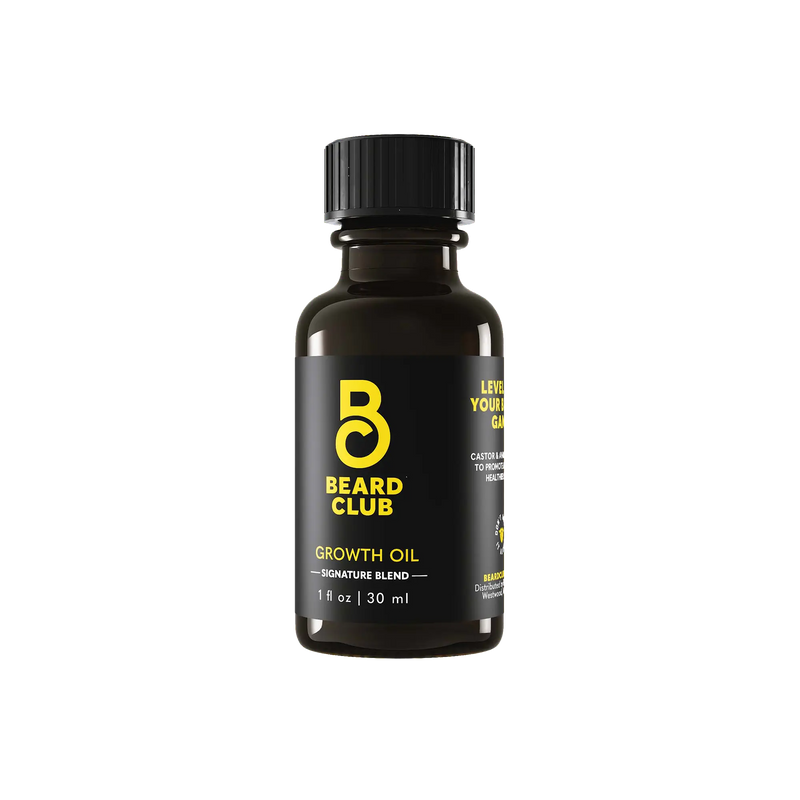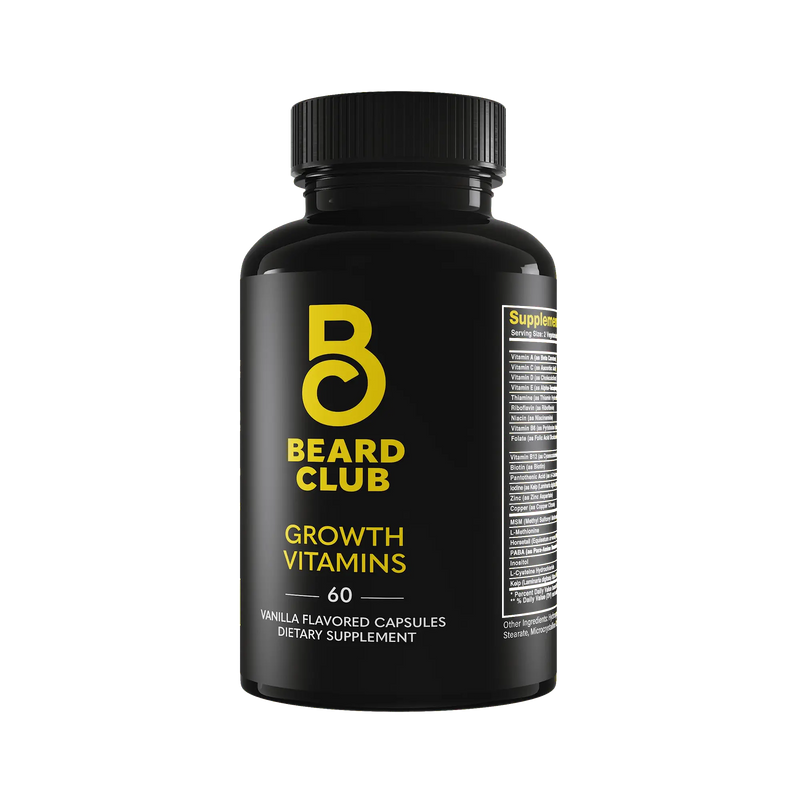Why Can I Only Grow a Neckbeard? 8 Things To Know
For some men, growing a full, even beard is a rite of passage… but what happens when your beard-growing journey leaves you with only one feature: a neckbeard?
If you can only grow hair on your neck and not much on your cheeks, jawline, or upper lip, you might be wondering, “What’s going on here?” Don’t worry — you’re not alone, and there’s no reason to feel self-conscious about your beard growth pattern.
Growing a neckbeard is more common than you think, and understanding why it happens can help you make the most of your facial hair. Whether you embrace your neckbeard or adopt strategies to work around it, this guide will break down everything you need to know.
1. Genetics Play a Major Role
The biggest factor behind your beard growth pattern is your genetics. Hair growth on your face is largely determined by how sensitive your hair follicles are to dihydrotestosterone (DHT), a hormone derived from testosterone.
Some men have follicles that are more sensitive to DHT in certain areas, like the neck, which leads to more growth there.
If your cheek, jawline, or mustache follicles aren’t as responsive to DHT, those areas may remain sparse while your neck hair flourishes. Unfortunately, you can’t change your genetic blueprint, but this knowledge can help you set realistic expectations.
Pro Tip: Take a look at your family. If the men in your family have patchy or sparse beards, chances are your beard growth pattern is inherited.
2. Age Can Be a Factor
If you’re in your late teens or early 20s, don’t write off the rest of your beard just yet.
Beard growth can continue well into your late 20s or even early 30s. What looks like a neckbeard today might develop into a fuller beard over time as your hormones stabilize and your hair follicles become more active.
How It Works
If you’re younger, give your beard time. You might not be stuck with a neckbeard forever.
- Puberty and Early Adulthood: During these years, neck hair often grows faster than cheek and jawline hair.
- Mid-to-Late 20s: This is when many men start to see more balanced beard growth.
3. Hormones Affect Beard Growth
Hormones like testosterone and DHT are the driving forces behind facial hair growth. While testosterone is responsible for overall hair growth, DHT determines where and how thick your facial hair comes in.
If your neck follicles are more receptive to DHT than the rest of your face, that’s where your beard will thrive. However, low testosterone or imbalanced hormones can also contribute to patchy or uneven beard growth.
How To Manage Your Hormone Levels
Some men look into lifestyle changes or even supplements to support healthy testosterone levels.
Here are a few tips:
- Get enough sleep (seven to nine hours per night).
- Eat a balanced diet rich in healthy fats, protein, and vitamins.
- Exercise regularly, focusing on both cardio and weightlifting.
- Manage stress, as high cortisol levels can interfere with testosterone production.
While these changes won’t guarantee a fuller beard, they can support overall hair growth and health.
4. Hair Follicle Density Varies By Area
Another reason you can’t grow a beard might be the natural density of your hair follicles. The number of follicles on your neck may simply be higher than on your cheeks or jawline. Since beard hair grows out of these follicles, areas with less of them will naturally have less coverage.
Facial hair density can vary significantly from person to person. Some men are born with densely packed follicles that result in thick, even beards, while others have sparser distribution, leading to patchy growth patterns.
Pro Tip: While you can’t increase follicle density, you can make the hair you do have look thicker with the right grooming techniques (more on this later).
5. Skincare Matters More Than You Think
Healthy skin is the foundation for healthy beard growth. If your skin isn’t in good condition — due to dryness, clogged pores, or poor circulation — it can impact the quality of your facial hair.
Neckbeards, in particular, can suffer from irritation, itchiness, or ingrown hairs because of the sensitive skin in that area.
How To Maintain Healthy Skin
By taking care of your skin, you can create a healthy environment for facial hair to thrive.
- Exfoliate: Use a gentle scrub or brush to remove dead skin cells and prevent clogged pores.
- Moisturize: Hydrated skin promotes hair growth. Use a moisturizer or beard oil to keep your skin and neck hair soft.
- Massage Your Neck: This increases blood flow to your follicles and encourages growth.

6. How To Groom Your Neck Beard
If you’ve decided to embrace your neckbeard, good for you! That said, keeping it well-groomed is essential to avoid looking unkempt.
Here are some grooming tips to make your neckbeard look intentional and stylish:
- Trim Regularly: Use a precision beard trimmer to keep your neck hair at an even length. Avoid letting it grow too wild, as this can look messy.
- Define the Edges: Shave the area above your Adam’s apple to create a clean neckline. This helps your neckbeard look polished rather than overgrown.
- Pair It With Stubble: If you can grow light stubble on your cheeks or jawline, blend it with your neckbeard for a more cohesive look.
While the neckbeard gets a bad rap, it can work well in a fuller neck and chin style. Some men use it as the foundation for a thicker goatee or sculpted beard.
7. Try Beard Growth Products
If you’re eager to fill in sparse areas and grow beyond a neckbeard, you might have considered beard growth products like oils, serums, or supplements.
Here’s what to know:
- Beard Oils and Balms: While they don’t directly stimulate growth, beard balms can make your existing hair healthier and more manageable.
- Minoxidil: Often used for hair loss on your scalp, minoxidil has been shown to stimulate beard growth in some men. Consult a dermatologist before using it on your face.
- Biotin Supplements: Biotin is a popular supplement for hair growth, but its effectiveness can vary. It’s worth trying if your diet is low in this nutrient.
No product can create new follicles where they don’t exist. However, these tools can support existing hair growth and help your neckbeard look its best.
8. Stress and Lifestyle Impact Beard Growth
Believe it or not, your lifestyle choices and stress levels can have a serious effect on your beard growth.
High stress levels can disrupt hormone production, including testosterone and DHT, which are crucial for beard development. If your body is under stress, it may prioritize other functions over growing hair, leaving you with patchy or uneven growth — including a neckbeard as your dominant feature.
How Your Lifestyle Affects Beard Growth
Here’s how lifestyle factors can impact your facial hair:
- Stress Hormones: Cortisol, the stress hormone, can suppress testosterone, indirectly affecting beard growth.
- Diet Deficiencies: A lack of essential nutrients, like biotin, zinc, and vitamin D, can weaken your hair follicles, making it harder for hair to grow evenly.
- Poor Sleep: Inadequate sleep reduces your body's ability to produce and regulate hair growth hormones.
How To Manage Stress for Beard Growth
Now, let’s discuss how you can reel in your stress and achieve optimal beard growth:
- Get Active: Regular exercise, especially strength training, helps balance hormones and supports circulation, which promotes healthy hair growth.
- Prioritize Rest: Aim for seven to nine hours of quality sleep every night to allow your body to repair and regenerate.
- Eat for Growth: To nourish your hair follicles, include nutrient-dense foods like eggs, nuts, leafy greens, and fatty fish in your diet.
- Practice Relaxation Techniques: Activities like meditation, yoga, or even simple deep-breathing exercises can help you manage your stress and keep your hormones in check.
Even if you’re prone to growing a neckbeard, managing stress and improving your lifestyle can encourage healthy and even growth patterns over time. While it may not completely change where your hair grows, it can help the hair you have grow thick and strong.
Should You Embrace Your Neckbeard?
The term "neckbeard" might have negative connotations, but there’s no reason to let that define you. If your neck is where your beard grows best, you have two choices:
- Rock It: Keep it well-groomed and pair it with complementary facial hair styles, like a goatee or chin strap.
- Redirect It: Shave your neckbeard and focus on cultivating a clean-shaven look or a different style for your growth pattern.
Ultimately, confidence is the key to pulling it off. Whether you embrace your neckbeard or look for ways to balance your growth, owning your look makes all the difference.
Love Thy Beard With The Beard Club

If you’ve been wondering, “Why can I only grow a neckbeard?” the answer likely lies in your unique combination of genetics, hormones, and follicle distribution.
While it can be frustrating not to grow a full beard, focusing on what you can control — like grooming, skincare, and styling — can all boost your confidence.
Beard growth is highly personal, and there’s no right or wrong way to approach it. That’s why The Beard Club is here to help with tips, tools, and products to keep your grooming game strong.
Sources:
Biochemistry, Dihydrotestosterone - StatPearls | NCBI Bookshelf
Testosterone — What It Does And Doesn't Do | Harvard Health


















